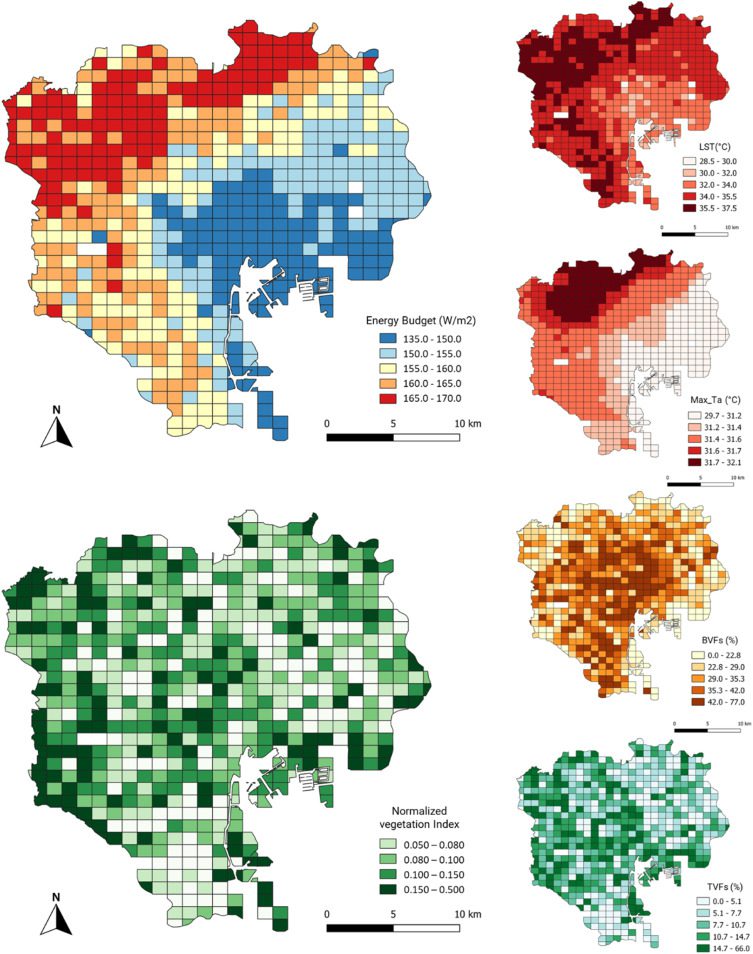Rapid urbanization and high-density development are major drivers of global warming. The associations of spatial landscape patterns with urban thermal environments have been extensively investigated. Meanwhile, quantifying the cooling effects of landscape patterns on street-level outdoor thermal comfort has been less attempted. This study examined the relationship between the spatial heterogeneity of landscape patterns and urban residents’ outdoor thermal comfort in Tokyo, Japan. The cooling effects of the greenery pattern – configurations and compositions – on thermal comfort were explored while considering the interaction effects of greenery patterns with water bodies and urban densities. Our study findings indicated that spatial landscape patterns have a statistically significant impact on outdoor thermal comfort, showing 69% of explanatory power (Adj-r2) in the spatial error model. The cooling effects of greenery were improved when their spatial patterns were in a more aggregated, less fragmented, and less complex shape. Furthermore, outdoor thermal stress was relatively lower when there was simple shape greenery in low-density areas or complex shapes but in high-density areas while indicating synergies between them. Our findings would provide microclimatic urban planning and design implications of how to spatially configure urban greenery to improve outdoor thermal comfort.


